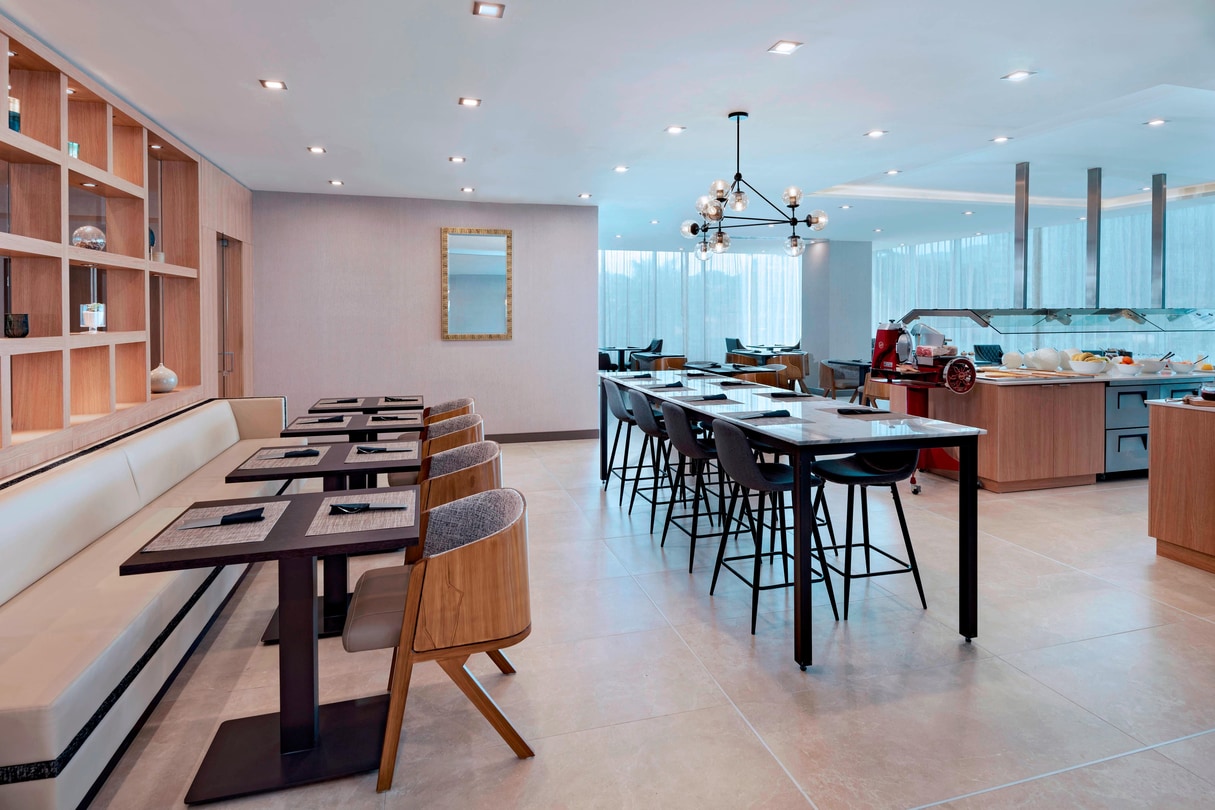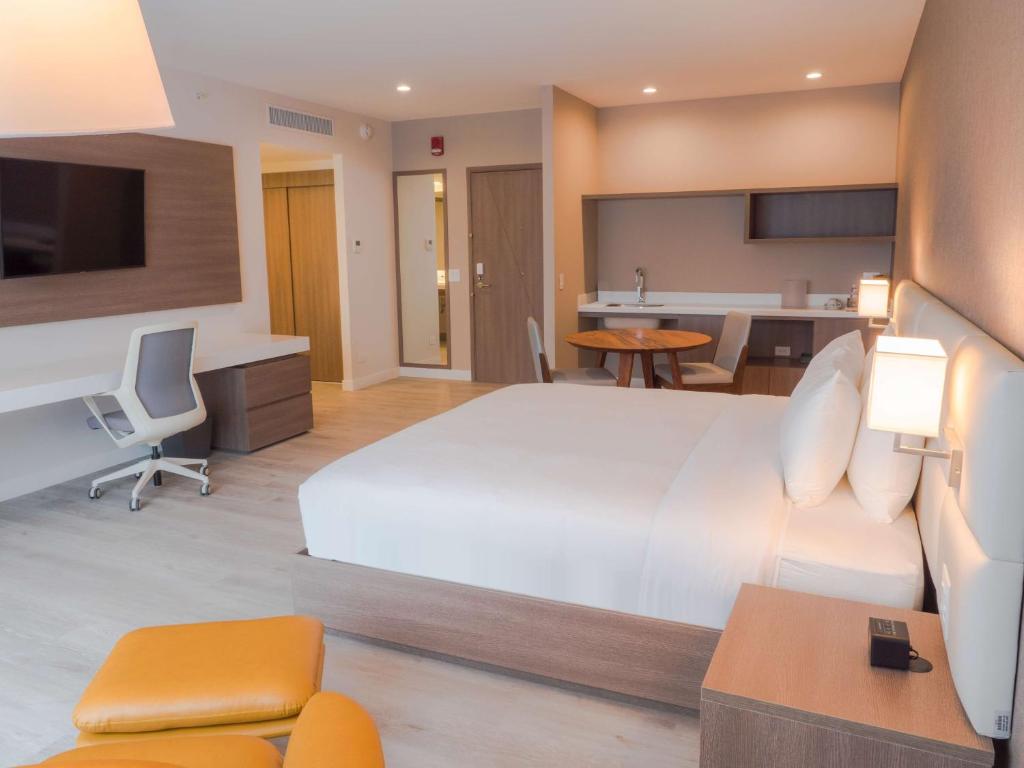Lighting plays a pivotal role in creating captivating environments that elevate the guest experience in hotels. At LUMEN, we have had the privilege of collaborating on the design of unique spaces that go beyond simple lighting functionality.
In this article, we will explore three successful cases of lighting design in hotels where the fusion of architectural concept, attention to guest experience, and alignment with brand identity has been key to achieving exceptional results. These projects not only illustrate the importance of lighting in shaping hotel spaces but also how it can become a powerful tool for weaving unforgettable visual stories into the memory of users.
Table of contents
Hotel El Mangroove, Autograph Collection
Hotel El Mangroove, Autograph Collection
Located in Bahía Papagayo, 20 minutes from Liberia International Airport, El Mangroove occupies 17 acres of beachfront mangrove forest. Its design captures the simple yet exotic essence of Costa Rica, a blend of bohemian and contemporary styles reflected through natural wood details, regional artwork, and stone finishes. For the lighting design, the following aspects were considered:
- Architectural elements: Focused lighting highlights key architectural elements such as wooden columns, exposed beams, and stone details, adding dimension and texture to the interior spaces.
- Perimeter lighting: Perimeter lights around the pool enhance safety and create an elegant aesthetic.
- External relaxation areas: Soft, diffuse lights are used to create a relaxing and rejuvenating atmosphere aligning with the wellness experience.
AC Hotel Escazú
For the AC Hotel in the cosmopolitan area of Escazú, lighting design focuses on creating a cozy and functional ambiance that enhances the contemporary aesthetics of each space. Key features of the lighting design include:
- Ambient lighting: Warm and soft light sources are used to create pleasant ambient lighting in common areas such as the lobby and seating areas, contributing to a sense of comfort and well-being.
- Focused lighting: Key architectural elements and artworks are highlighted with focused lighting to add visual appeal and emphasize the modern interior design.
- Dining lighting: Modern pendant lamps and accent lights in the restaurant create a contemporary and sophisticated atmosphere. Dimmable lighting allows adaptation to different times of the day and special events.
- Adjustable room lighting: In rooms, bedside reading lamps, a floor lamp, and a desk lamp are installed to allow guests to adjust lighting according to their preferences and needs.
Hilton Garden Inn, Santa Ana
The lighting design for this city hotel combines comfort, functionality, and modernity to meet the diverse needs of business and leisure travelers. Key features include:
- Restaurant area: A vegetation wall in the restaurant area is illuminated with strategically placed pendant lamps, providing functional lighting while highlighting the beauty of the greenery, creating a fresh and inviting atmosphere.
- Rooms:
- Bedside Reading Lamps: Reading lamps are installed on the bed headboards, offering soft and directed lighting ideal for nighttime reading or relaxing activities before sleep.
- Floor Lamp: A floor lamp is placed in a strategic corner of the room, providing an additional light source and contributing to pleasant ambient lighting.
- Desk Lamp: For work areas or desks, an adjustable desk lamp is included, allowing guests to perform tasks with directed and functional lighting.
- Integrated lights: Recessed lights in ceilings and walls maintain a clean and minimalist design, providing functional lighting without unnecessary visual distractions.
To ensure a successful outcome when designing hotel lighting, at LUMEN, we also considered:
- Guest Experience: Beyond basic lighting function, it is crucial to consider how each type of lighting will contribute to the overall guest experience. Lighting should be comfortable, welcoming, and adaptable to different visitor preferences.
- Space architecture: Architecture and the overall design of the space must harmoniously integrate with lighting. Fixtures should complement the hotel's general aesthetic, highlighting key architectural features and creating a cohesive experience.
- Adaptability to changes: Hotels may undergo changes in design, branding, or functions over time. Lighting should be adaptable enough to incorporate these changes without compromising aesthetics or efficiency.
- Budget: The cost of designing, implementing, and maintaining lighting should align with the project budget. Careful financial planning will ensure that lighting goals are achieved without exceeding established limits.
Taking these aspects into account will ensure that the hotel lighting is not only visually stunning but also functional, safe, and capable of adapting to the changing needs of the industry and guests.
- Safety and regulations: Compliance with local and international lighting safety regulations is crucial for hotels. This includes adequate visibility in critical areas such as corridors and emergency exits, as well as glare prevention and light management to avoid hazardous situations.
- Maintenance and durability: The durability and ease of maintenance of selected fixtures should be considered. Choosing high-quality materials and ensuring maintenance accessibility can reduce long-term costs and minimize disruptions to hotel operations.
- Emerging technology: Given the constant evolution of technology, it is essential to consider emerging solutions. Implementing intelligent systems, automation, and advanced control technologies can enhance operational efficiency and guest experience.
At the intersection of art and functionality, lighting design in the hotel industry stands out as a key tool to define the essence and identity of each space. Through the three explored success stories, it becomes evident that lighting not only illuminates rooms but also serves as a strategic aspect to convey emotions, highlight distinctive architectures, and, above all, create memorable experiences for guests. The symbiosis between architectural concept, meticulous attention to the guest experience, and alignment with brand identity demonstrates that lighting design not only illuminates spaces but also illuminates the narrative of each hotel, transforming each stay into a captivating stage of unforgettable memories.



